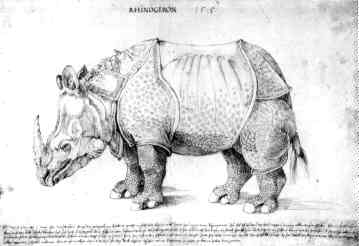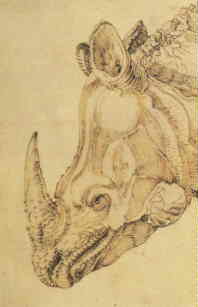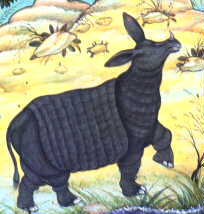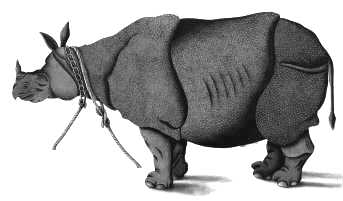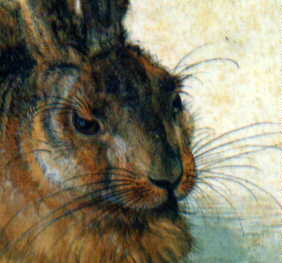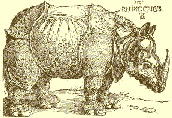
|
Group of History and Theory of Science
Dürer's Rhinoceros,
continued
|
The image of Dürer's rhinoceros we have used
is taken from a woodcut made by Dürer himself. The print was produced
after an ink drawing that Dürer had made earlier in the same year
(see below). As it usually happened, the woodcut present a mirror image
of the original drawing (the head point the other way). Dürer's manuscript
writing under the drawing describe the history of the rhinoceros brought
by king Manuel I. The detail shows the head of the animal – it is even
more "real" than in the woodcut. The eye of the rhinoceros stares at us
as if it was alive.
For comparison with Dürer's rhinoceros, we present
below other representations of that animal. One of them (below, left) was
made by an Indian artist, in the 16th century. The other one (below, right)
is a work of the late 18th century, by an European artist. Both were drawn
after the direct observation of a living animal. They avoid several of
Dürer's mistakes: they do not present the additional horn on the back,
the legs have no scales, there is no shield on the animal's body. They
exhibit a thick skin in folds – that was what led Dürer to think the
rhinoceros had had plates, from the original Portuguese draft. Although
they are more correct than Dürer's representation, they are much less
"alive". The Indian drawing looks like a cloth toy...
We show below the details of two other works
by Dürer, painted from the direct observation of animals: a bird's
wing and the head of a rabbit. They show the impressive technique of this
artist.
Group of History and Theory of Science
Caixa Postal 6059, 13081-970 Campinas, SP, BRAZIL
ghtc@ifi.unicamp.br
This page was updated on 12/Mar./1998


